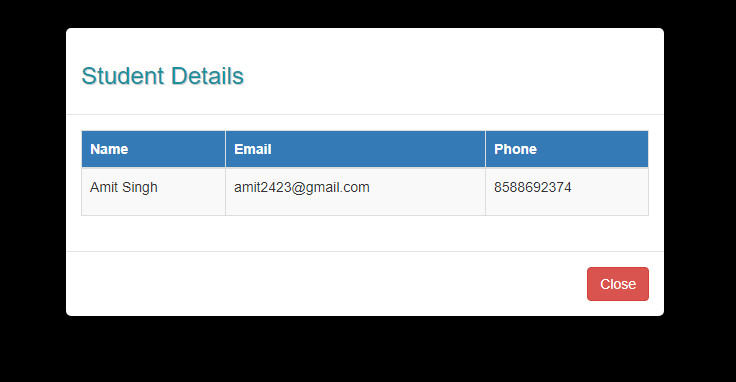PHP Tutorial
What is PHP Environment Setup of PHP PHP Syntax PHP Comments PHP Echo & print PHP Variables PHP Scope Variables PHP $ and $$ Variable PHP Constants PHP Operators PHP Data TypesPHP Conditional Statements
PHP Loop Type
PHP Arrays
PHP String PHP FunctionsPHP Form Examples
Form Intro Get & Post Form Validation / Required PHP Complete FormPHP Advanced
PHP Include / Require PHP Date & Time PHP Session PHP Cookies PHP File Handling PHP Open File PHP Read File PHP Write File PHP Append File PHP Delete File PHP File Upload PHP Sending Mail PHP Error HandlingGet & Post
PHP provides two methods through which a client (browser) can send information to the server. These methods are given below, and discussed in detail:
- GET method
- POST method
The GET Method
The GET method sends the encoded user information appended to the page request. The page and the encoded information are separated by the ? character.
http://www.example.com/action.php?name=amit&age=24
The bold parts in the URL are the GET parameters and the italic parts are the value of those parameters. More than one parameter=value can be embedded in the URL by concatenating with ampersands (&). One can only send simple text data via GET method.
Advantages and Disadvantages of Using the GET Method
- Since the data sent by the GET method are displayed in the URL, it is possible to bookmark the page with specific query string values.
- The GET method is not suitable for passing sensitive information such as the username and password, because these are fully visible in the URL query string as well as potentially stored in the client browser's memory as a visited page.
- Because the GET method assigns data to a server environment variable, the length of the URL is limited. So, there is a limitation for the total data to be sent.
Example:
<?php
if( $_GET["name"] || $_GET["age"] )
{
echo "Welcome ". $_GET['name']. "<br />";
echo "You are ". $_GET['age']. " years old.";
exit();
}
?>
<html>
<body>
<form action="" method="GET">
Name: <input type = "text" name = "name" />
Age: <input type = "text" name = "age" />
<input type = "submit" />
</form>
</body>
</html>
The POST Method
The POST method transfers information via HTTP headers. The information is encoded as described in case of GET method and put into a header called QUERY_STRING.
Advantages and Disadvantages of Using the POST Method
- It is more secure than GET because user-entered information is never visible in the URL query string or in the server logs.
- There is a much larger limit on the amount of data that can be passed and one can send text data as well as binary data (uploading a file) using POST.
- Since the data sent by the POST method is not visible in the URL, so it is not possible to bookmark the page with specific query.
Example:
<?php
if( $_POST["name"] || $_POST["age"] ) {
echo "Welcome ". $_POST['name']. "<br />";
echo "You are ". $_POST['age']. " years old.";
exit();
}
?>
<html>
<body>
<form action="" method="POST">
Name: <input type = "text" name = "name" />
Age: <input type = "text" name = "age" />
<input type = "submit" />
</form>
</body>
</html>
Elevenstech Web Tutorials
Elevenstech Web Tutorials helps you learn coding skills and enhance your skills you want.
As part of Elevenstech's Blog, Elevenstech Web Tutorials contributes to our mission of “helping people learn coding online”.
Read More
Newsletter
Subscribe to get the latest updates from Elevenstech Web Tutorials and stay up to date

 Click to Join
Click to Join



